Folk dances are an integral part of rural and tribal folk. Over the centuries, these folk dances have spread out to not rural parts of the country. These folk dances have evolved over centuries and are associated with festivities of one kind or the other. These dances also were also introduced to ease the farmer and rural folks of the burden and the austerity of their job. This is precisely why most of the folk dances revolve around seasonal changes and the beginning or end of a harvest. Here are some of the most popular folk dances from Central India.
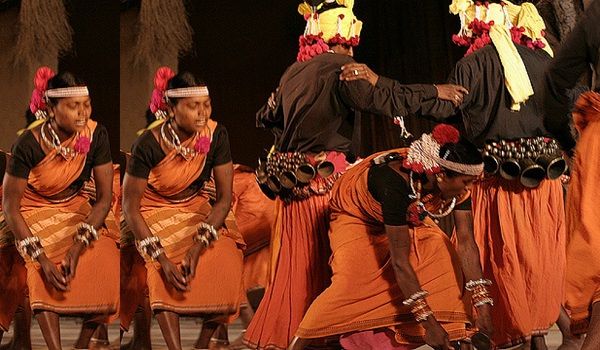
Jawara Dance
Region/Area: Madhya Pradesh
Occasion: Harvest
Highlight: The women perform a balancing act by carrying a basket full of the harvested crop on their head.
Also called ‘The Harvest Dance’, Jawara marks the successful harvest of the peasants of the Bundelkhand region. Men and women dance their way to happiness whenever they are rewarded with good harvest. This folk dance is extremely important to the people of Bundelkhand region because it is an expression of great joy and prosperity. The women perform a balancing act by carrying a basket full of the harvested crop on their head. This particular move is practiced a number of times before displaying the actual performance. The dance performance is supported by a variety of musical instruments which includes percussion, wind and string instruments.
Bhagoria Dance
Region/Area: Madhya Pradesh
Occasion: Bhagoria Festival
Highlight: Young men and women are allowed to elope after choosing their life partners.
Unlike other traditional folk dances, Bhagoria dance doesn’t have a set of rules to be followed. People gather on the dancing field and start dancing however they like. The beats are provided by musicians, who usually play drums. Though the dance is part of a unique festival, which allows young men and women to elope, it has its own agricultural significance – completion of the harvest season.Huge drums known as ‘Dhol’ are played by a number of musicians. Apart from ‘Dhols,’ people also play other percussion instruments which adds to the spirit of the festival.
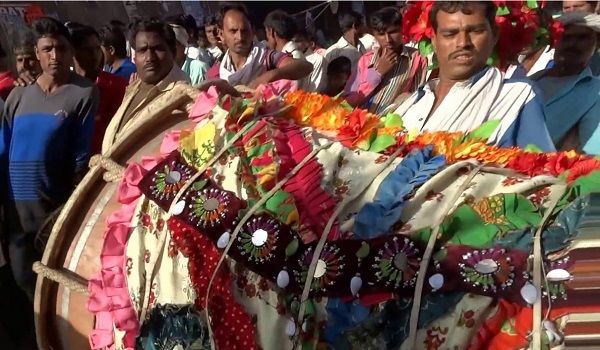
Suwa Dance
Region/Area: Chhattisgarh
Occasion: Performed while worshipping the local deity
Highlight: Women imitate parrots as part of the performance
Usually performed before the festival of lights, Suwa dance is one of the most popular folk dances of Chhattisgarh. Also known as ‘parrot dance’, this unique dance form gets women to act like parrots! It is usually performed only by women and men get to play musical instruments of their choice. The songs are sung by the women and they often narrate the stories of Ramayana – one of the two great epics of India.Suwa dance is also one of those rare and important dance forms as it is a symbolic dance. These dances are only performed for spiritual and religious purposes. The origin of symbolic dance dates back to as early as the fourth century.
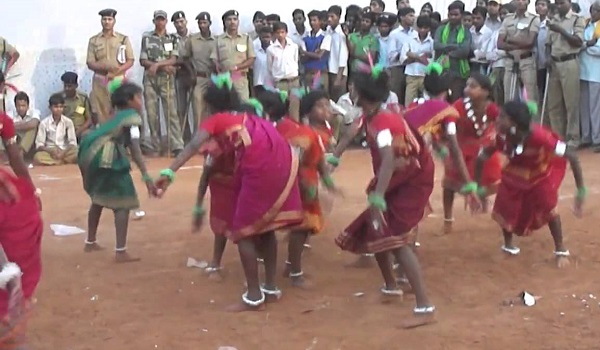
Tertali Dance
Region/Area: Madhya Pradesh
Occasion: Part of a religious ritual
Highlight: Women balance earthen pots on their head while dancing
Tertali dance is part of a religious ritual performed by the Kamar tribe of Madhya Pradesh. The dance is performed only by women who start by squatting. A musical instrument called ‘Manjira’ is tied all over their body – most commonly to their legs and the same is played by the performers throughout the ritual. This traditional dance form also requires the performers to hold on to swords, using only their teeth! The dancers also balance pots on their head while holding on to the sword and playing the ‘Manjira’.
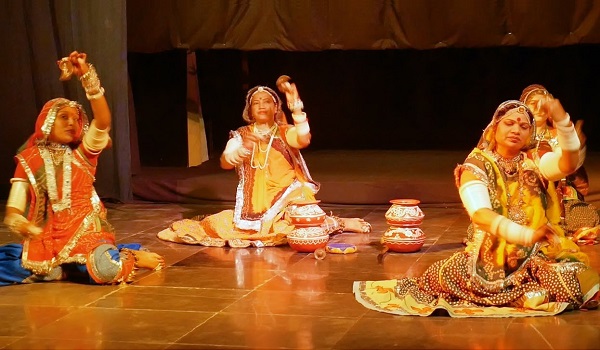
Grida Dance
Region/Area: Madhya Pradesh
Occasion: Harvest
Highlight: The dance intensifies over a period of time until the dancers are left exhausted
Grida dance is performed during winter when the rabi crop is ready to be harvested. The dance marks the success of farmers which is celebrated among the villagers in a grand manner. Grida dance is an important dance form and hence villagers from several villages assemble in a chosen village which plays the host. The celebration begins in the morning and goes on till dusk. The dance is actually divided into three parts. In the first phase the dancers start off with slow moves and the tempo picks up to a moderate pace which forms the second phase. During the third and last phase, the music is played with faster beats which demands the dancers to dance energetically and in frantic pace.
Raut Nacha
Region/Area: Chhattisgarh
Occasion: To commemorate certain rituals/ Worship
Highlight: Skills displayed by the dancers will leave the viewers spellbound
Performed during festivals and to commemorate certain rituals, the Yadava community considers this dance form sacred. Hence, it is also performed to invoke the blessings of Lord Krishna. Not surprisingly, the dance often reminds us of the ‘Rasa lila’ – another dance form which is considered important by the devotees of Lord Krishna. Performers of Raut Nacha wear colorful clothes and play instruments like drums. Both men and women display a variety of skill sets which is wonderful to watch.
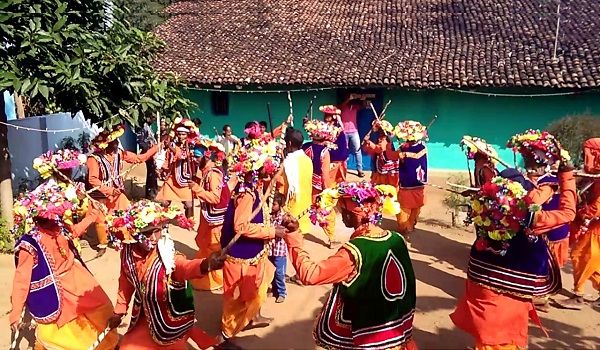
Matki Dance
Region/Area: Malwa, Madhya Pradesh
Occasion: Any special occasion
Highlight: Women dance while balancing earthen pots on their head
Performed by the people of Malwa, Matki dance is generally a solo performance in which the dancer is always a woman. These dancers often balance more than one earthen pot on their head while showcasing their dancing skills. They often wear colorful clothes and ornaments before ascending the stage. The music for the dance performance is often made by men. They play instruments such as ‘dhols’ among others.
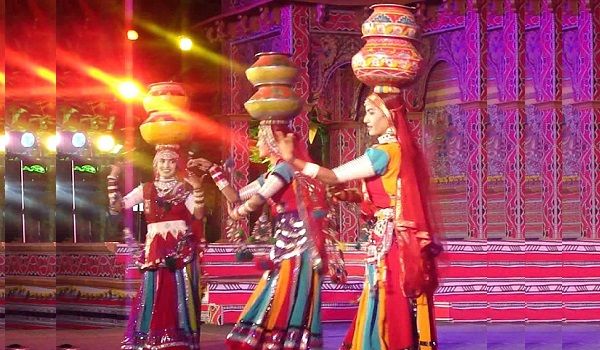
Phulpati Dance
Region/Area: Malwa, Madhya Pradesh
Occasion: Performed during Holi festival
Highlight: Only unmarried girls can take part in the dance
Performed only by the unmarried girls of the Malwa community, Phulpati dance celebrates nature. Mainly performed by groups known as ‘Banjaras’ and ‘Kanjars’, the dance is an expression of joy and hence is a part of the Holi celebrations. A percussion instrument called ‘Dolaki’ is used to make the young girls shake their legs. The dancers are usually dressed in bright colors and the movements are rather simple to emulate. This particular dance form is also known as Maruni dance.
Kaksar Dance
Region/Area: Chhattisgarh
Occasion: Harvest
Highlight: Dancers can choose their life partners from the troupe
To invoke the blessings of the deity and to enjoy a rich harvest, young boys and girls of Bastarper form Kaksar dance. Boys put on a peculiar costume of a long white robe while girls are clad in all their finery. An interesting trivia about the Kaksar dance is that it allows its dancers to choose their life partners from the same dance troupe.
Karma Dance
Region/Area: Chhattisgarh/ Madhya Pradesh
Occasion: Festival
Highlight: The dance has multiple patterns which is a treat to watch
The Karma dance is performed during the festival of Karma Puja which is celebrated in autumn. People who perform this dance strongly believe in Karma and hope to do away with bad Karma through their dance performances. Apart from religious and spiritual purposes, the dance is also performed for its entertainment value. Both men and women display their dancing skills while the musicians play instruments such as ‘payri’, ‘jhumki’, ‘Chhalla’ and ‘Thumki’.
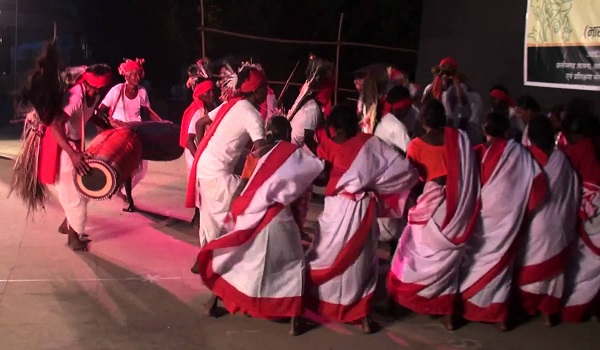
Saila Dance
Region/Area: Chhattisgarh
Occasion: Harvest
Highlight: The dancers hop around while supporting each other for balance.
Saila dance is performed by the young boys of Chattisgarh after the successful completion of harvest. Saila is a stick-dance and is popular among the people of Sarguja, Chhindwara and Betul districts. The dance involves a variety of movements and some buffoonery. Sometimes the dancers form a circle and hop around while supporting each other for balance.
Gaur Dance
Region/Area: Chhattisgarh, Madhya Pradesh
Occasion: Weddings
Highlight: Tossing of horns
Gaur dance is a colorful event as both men and women wear bright and extravagant clothes. While men don colorful head-dresses and hats adorned with peacock plumes, women wearornaments made out of brass and beads. The entire act turns feral when the men begin to play the drums which is followed by tossing of horns and feathers found in their head-dresses.



